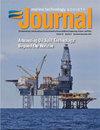The Global Ocean Biogeochemistry (GO-BGC) Array of Profiling Floats to Observe Changing Ocean Chemistry and Biology
IF 0.7
4区 工程技术
Q4 ENGINEERING, OCEAN
引用次数: 2
Abstract
Abstract The Global Ocean Biogeochemistry (GO-BGC) Array is a project funded by the US National Science Foundation to build a global network of chemical and biological sensors on Argo profiling floats. The network will monitor biogeochemical cycles and ocean health. The floats will collect from a depth of 2,000 meters to the surface, augmenting the existing Argo array that monitors ocean temperature and salinity. Data will be made freely available within a day of being collected via the Argo data system. These data will allow scientists to pursue fundamental questions concerning ocean ecosystems, monitor ocean health and productivity, and observe the elemental cycles of carbon, oxygen, and nitrogen through all seasons of the year. Such essential data are needed to improve computer models of ocean fisheries and climate, to monitor and forecast the effects of ocean warming and ocean acidification on sea life, and to address key questions identified in “Sea Change: 2015‐2025 Decadal Survey of Ocean Sciences” such as: What is the ocean's role in regulating the carbon cycle? What are the natural and anthropogenic drivers of open ocean deoxygenation? What are the consequences of ocean acidification? How do physical changes in mixing and circulation affect nutrient availability and ocean productivity?观测不断变化的海洋化学和生物学的全球海洋生物地球化学(GO-BGC)剖面浮标阵列
摘要全球海洋生物地球化学(GO-BGC)阵列是美国国家科学基金会资助的一个项目,旨在在Argo剖面浮标上建立一个全球化学和生物传感器网络。该网络将监测生物地球化学循环和海洋健康。漂浮物将从2000米深的地方收集到水面,增强现有的Argo阵列,该阵列用于监测海洋温度和盐度。数据将在通过Argo数据系统收集后的一天内免费提供。这些数据将使科学家能够研究有关海洋生态系统的基本问题,监测海洋健康和生产力,并观察一年中所有季节的碳、氧和氮元素循环。需要这些重要数据来改进海洋渔业和气候的计算机模型,监测和预测海洋变暖和海洋酸化对海洋生物的影响,并解决“海洋变化:2015-2025年海洋科学十年调查”中确定的关键问题,如:海洋在调节碳循环中的作用是什么?公海脱氧的自然和人为驱动因素是什么?海洋酸化的后果是什么?混合和循环中的物理变化如何影响营养物质的可用性和海洋生产力?
本文章由计算机程序翻译,如有差异,请以英文原文为准。
求助全文
约1分钟内获得全文
求助全文
来源期刊

Marine Technology Society Journal
工程技术-工程:大洋
CiteScore
1.70
自引率
0.00%
发文量
83
审稿时长
3 months
期刊介绍:
The Marine Technology Society Journal is the flagship publication of the Marine Technology Society. It publishes the highest caliber, peer-reviewed papers, six times a year, on subjects of interest to the society: marine technology, ocean science, marine policy, and education.
 求助内容:
求助内容: 应助结果提醒方式:
应助结果提醒方式:


